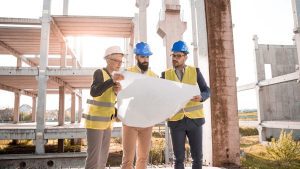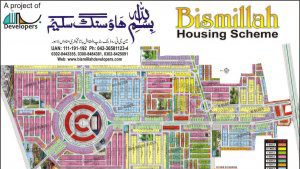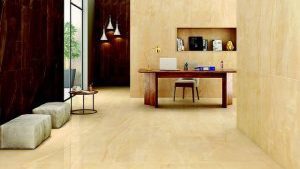
Importance of Skilled Labor in Construction Industry
Importance of Skilled Labor in Construction Industry In terms of construction today, we are going to tell a very important point, which is usually considered

3D printing in architecture is a sort of breaking point and a beguiling advancement in today’s technology. 3D printers use resin, metal and other such materials to print 3D objects. These objects could be smaller or could be made larger by assembling smaller objects.
In architecture the main function 3D printing performs is the formation of scale models which gives an idea of the actual structure to be made. These scale models allow architects to get an accurate structure geometrically, it could be choreographed to achieve a practical sense of the model and it also could be used as a reference point during construction of the idealized 3D print.
As this progressed the 3D printing is used for many different purposes. For instance, Adrien Priestman, who is a renowned British architect, designed the first printed construction element.
At the same time, Behrokh Khoshnevis, who is now working for NASA first of all designed a new method of printing habitable structures based on the contour crafting principles and made layer by layer structures.
Other than these, 3D printing in architecture could be used to miniature models of anything. It could also be utilized to print the concrete printed form of a building on site which could be really helpful for construction point of view and it could also help to predict the flaws and pitfalls of any sort of architectural abatement which could be deadly after the actual building formation.
3D printing provides an utmost prototyping capability instantaneously. It is also used for planning and printing different new sort of design and layouts of houses, building structures and could also be used to plan a new housing society or any vast commercial area.
3D printing is superior over the pre-existing technologies as it is very time saving in a sense that it could save a lot of time which was wasted previously in making all the models and still architect was left with some sever defects in architecture. It is versatile and multifaceted. It could be used and modified to use for a large range of projects.
It also come with an ease of use and has a large scale of use. It doesn’t depend upon the size of project, be it small or large, it could function effectively and give amazing results.
So, the bottom line, 3D printing has revolutionized the architecture field and we are waiting for some more magnificent and fascinating developments in the field with 3D printing.

Importance of Skilled Labor in Construction Industry In terms of construction today, we are going to tell a very important point, which is usually considered

Tips of the Week for Construction of House 8 Nov to 14 Nov 2019 We are proud to present Tips of the week for construction

An investors paradise Bismillah Housing Scheme Lahore Bismillah Housing Scheme Lahore has grown to be one of the hottest societies in Lahore to invest in.

Analysis of Real Estate in Lahore Real Estate was treated as a gold mine in Lahore during the first 6 months of 2016. Opportunists as

Renovating Houses: A New Trend In older times contractors only had to make a structure of the house, paint it and hand it over to

An Architect’s Canvas The architecture of the major cities of Pakistan is such that it consists of private houses, villas and suburban farm houses that
Get detailed information on the primary housing societies of Pakistan.
Address: 244, Ground Floor, Raja Center, Main Market, Gulberg 2, Lahore, Pakistan, 54650
Mob/WhatsApp: +92-3320776393
Email: enquiry@alirathore.com
TFN/NTN: 3398424-7
Timings: 10:00 AM – 6:00 PM (Mon to Saturday)
Closed on Public Holidays
©2015-2024 Ali Rathore Associates. All Rights Reserved. Powered by TechWrath
| Cookie | Duration | Description |
|---|---|---|
| cookielawinfo-checkbox-analytics | 11 months | This cookie is set by GDPR Cookie Consent plugin. The cookie is used to store the user consent for the cookies in the category "Analytics". |
| cookielawinfo-checkbox-functional | 11 months | The cookie is set by GDPR cookie consent to record the user consent for the cookies in the category "Functional". |
| cookielawinfo-checkbox-necessary | 11 months | This cookie is set by GDPR Cookie Consent plugin. The cookies is used to store the user consent for the cookies in the category "Necessary". |
| cookielawinfo-checkbox-others | 11 months | This cookie is set by GDPR Cookie Consent plugin. The cookie is used to store the user consent for the cookies in the category "Other. |
| cookielawinfo-checkbox-performance | 11 months | This cookie is set by GDPR Cookie Consent plugin. The cookie is used to store the user consent for the cookies in the category "Performance". |
| viewed_cookie_policy | 11 months | The cookie is set by the GDPR Cookie Consent plugin and is used to store whether or not user has consented to the use of cookies. It does not store any personal data. |